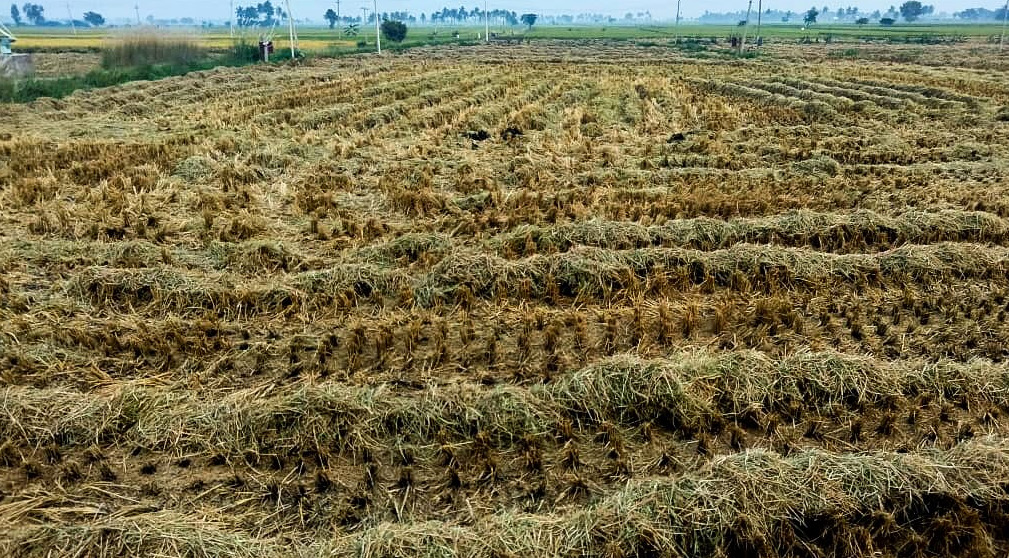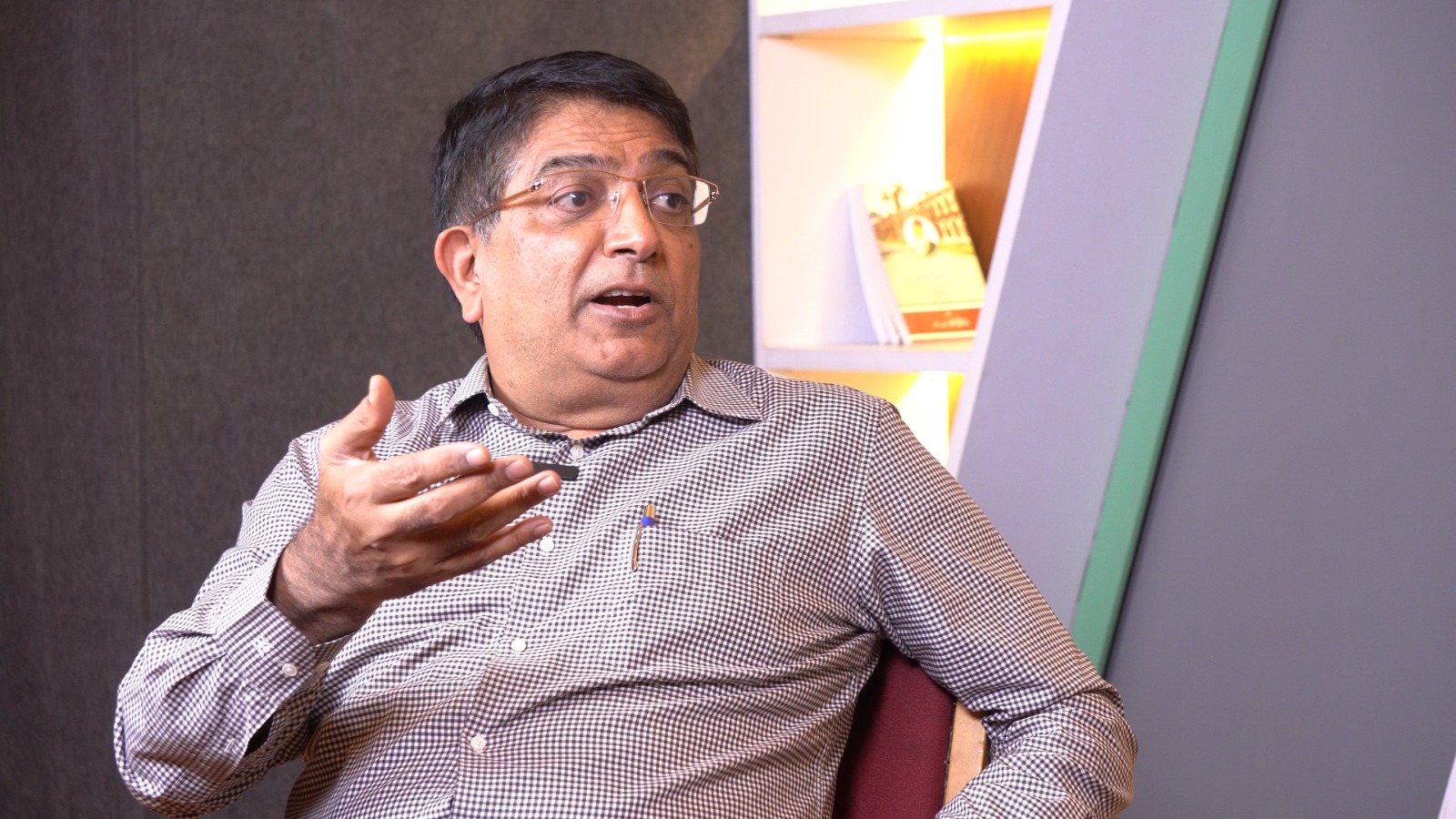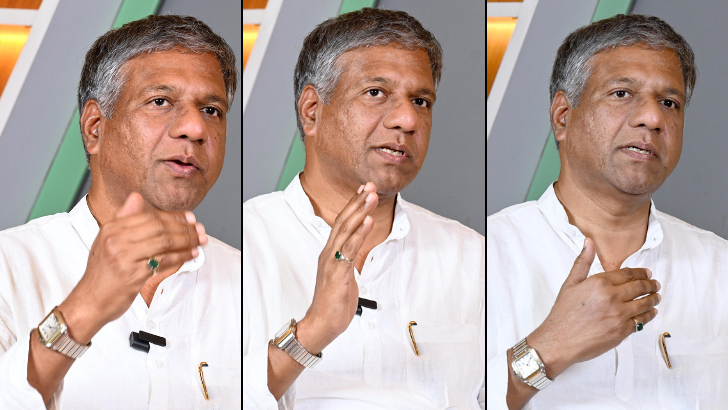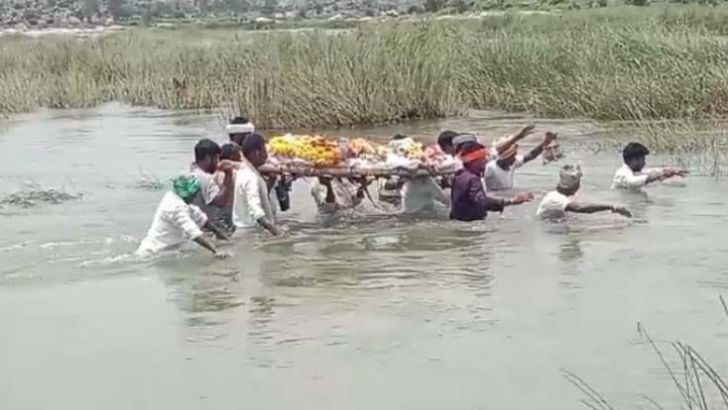Gangavathi farmers stare at uncertainty due to shortage of water
Renowned for its Sona Masuri rice, this region is grappling with a severe water crisis as Karnataka received only 25 per cent rainfall during the southwest monsoon
-
A six-month dry spell looms due to water scarcity in Gangavathi. PHOTO: SALAR
Gangavathi, 16 Dec
Tungabhadra reservoir held 12.503
thousand million cubic feet (tmcft) of water on 10 December against its live
storage capacity of around 100.8 tmcft, excluding around 33 tmcft of silt that
has accumulated in the dam bed over the last 50 years.
The remaining 12 tmcft of water is
not enough to be used for irrigation this season as well as the next season.
“We need a minimum of 80 tmcft of water in the dam for releasing it for
irrigation in Tungabhadra command area,” Chief Engineer of Tungabhadra Dam
Project, Maltesh HS, told Salar News. “This situation signals no positive
outlook for kharif crops this year."
Agriculture experts suggest that
the drought is expected to impact the Gangavathi ecosystem, and has prompted
farmers to contemplate migration to other towns and cities in search of
employment for the next six-eight months.
Salar News caught up with the
farmers residing in Gangavathi taluk, which is known as a centre for
agricultural development activities in the region.
Traditionally, November and
December is when labourers and machines are deployed for paddy cultivation
across the district. But a few farmers, particularly in the Gangavathi regions,
have started the kharif cultivation using locally available water sources,
holding onto the hope that dam water will be available soon.
Nagasimha, a farmer from the taluk
who leased five hectares, said, "I cultivated the Kharif crops as quickly
as possible, but water shortage is a harsh reality. I have to now look for a
job in the city to take care of my family and education with the lease amount
to be paid to the owner.”
Impact on rice mills, farmer
associations and contract workers
Gangavathi has long relied on
monoculture, specifically centred around the cultivation of paddy, a tradition
upheld for centuries. Over time, this agricultural ecosystem included dairy
farming, fertiliser shops, farming equipment suppliers, and rice mills.
Last year, the Gangavathi region
witnessed a rice production of 2.50 lakh bags. With the current situation, the
Farmer Association of the Gangavathi region say after six years, these
interconnected systems face the prospect of shutting down for a season,
resulting in substantial losses.
Suryanaryana Chiakori, a rice mill
owner with 25 years of experience, said, "More than 400 rice mills are
operating in the region, producing around 20 million quintals of paddy in the
first crop season and around 10 million quintals in the second season. As the
second season crops don't go into the mills, the mills are set to shut down for
a season."
The Farmer Association noted that
80 per cent of women in the region are engaged in contract work related to
paddy cultivation. The drought has forced contract farm workers to move
elsewhere for employment.
Young farmers seek sustainable
alternatives
The government imposed a ban on the
export of the popular 'Sona Masoori' rice from Gangavathi after reports of
increased use of chemicals and pesticides in the production. As a result, young
farmers say they hope to explore alternative job options over concerns about
the soil's fertility due to decades of rice cultivation.
Gopala Krishna K, a 24-year-old
farmer, said: "I would like to explore organic farming and not depend
solely on one crop. If there is encouragement or funding for alternative
resources, we, young farmers, can collectively initiate the change." He
said there is a need for the government to provide alternative solutions and
for researchers to study the land, offering insights into what other
alternative crops can be grown.
Reality vs government’s reality
In response to the severe drought
affecting the State, Revenue Minister Krishna Byre Gowda in the Belagavi
assembly said Rs 895 crore has been allocated for drought management. He said
despite the lack of relief funds from the Central government, the State
government has decided to release the first instalment of Rs 2,000 as drought
relief to farmers. However, the panchayat of Gangavathi has raised concerns
that by the time the government sends relief to the taluk, many farmers would
have already migrated.
Crop rotation and policy support
to the rice bowl
Experts propose that the government
should offer crop rotation as a solution to the crisis. Experts believe that
the practice of planting different crops sequentially on the same plot of land
will improve soil health, optimise nutrients in the soil and combat pest and
weed pressure. It allows farmers to dedicate one season to paddy and another to
pulses, tur, channa, and oilseed. With these, farmers can also get their soil
fertility back and promote ecological balance, constituting a sustainable and
environmentally friendly approach.
Dr TN Prakash Kammardi, former
chairman of Karnataka Agriculture Price Commission, said the government needs
to establish a minimum support price to encourage farmers to transition from
monoculture to alternative crops. He raises a cautionary note, suggesting that
without such measures, Karnataka could face agricultural challenges akin to
Rajasthan. –Salar News
Leave a Reply
Your email address will not be published. Required fields are marked *
roxmqzytwe
SALAR NEWS <a href="http://www.gmb53c4fc9371pc5pu693d5p88czy8n8s.org/">aroxmqzytwe</a> [url=http://www.gmb53c4fc9371pc5pu693d5p88czy8n8s.org/]uroxmqzytwe[/url] roxmqzytwe http://www.gmb53c4fc9371pc5pu693d5p88czy8n8s.org/
wnxyjklcb
SALAR NEWS [url=http://www.g5u21c660g10884xd08ab6uejyfc77brs.org/]uwnxyjklcb[/url] <a href="http://www.g5u21c660g10884xd08ab6uejyfc77brs.org/">awnxyjklcb</a> wnxyjklcb http://www.g5u21c660g10884xd08ab6uejyfc77brs.org/
wcrvvojfd
SALAR NEWS wcrvvojfd http://www.gsoa489y8g24rtr605mmz4874eul584ts.org/ [url=http://www.gsoa489y8g24rtr605mmz4874eul584ts.org/]uwcrvvojfd[/url] <a href="http://www.gsoa489y8g24rtr605mmz4874eul584ts.org/">awcrvvojfd</a>
gisrtgevcf
SALAR NEWS [url=http://www.g6l58f9h47382m5q2q8x6i0zzfcc56pfs.org/]ugisrtgevcf[/url] gisrtgevcf http://www.g6l58f9h47382m5q2q8x6i0zzfcc56pfs.org/ <a href="http://www.g6l58f9h47382m5q2q8x6i0zzfcc56pfs.org/">agisrtgevcf</a>
fwtfkgcwk
SALAR NEWS [url=http://www.g6xw68dq3a48wvq85qh2319nxy06i6p5s.org/]ufwtfkgcwk[/url] fwtfkgcwk http://www.g6xw68dq3a48wvq85qh2319nxy06i6p5s.org/ <a href="http://www.g6xw68dq3a48wvq85qh2319nxy06i6p5s.org/">afwtfkgcwk</a>
fxnbdngxzl
SALAR NEWS <a href="http://www.g807pmby4f2bk3y79xe1b9a80l00sd88s.org/">afxnbdngxzl</a> [url=http://www.g807pmby4f2bk3y79xe1b9a80l00sd88s.org/]ufxnbdngxzl[/url] fxnbdngxzl http://www.g807pmby4f2bk3y79xe1b9a80l00sd88s.org/
jchildzpzy
SALAR NEWS [url=http://www.g4516trou47jz0e8z570u82eu7h5x7wqs.org/]ujchildzpzy[/url] jchildzpzy http://www.g4516trou47jz0e8z570u82eu7h5x7wqs.org/ <a href="http://www.g4516trou47jz0e8z570u82eu7h5x7wqs.org/">ajchildzpzy</a>
vontbyjcm
SALAR NEWS vontbyjcm http://www.g6064f4zn8nf8378g0ydwy2k2r5y2w3ps.org/ [url=http://www.g6064f4zn8nf8378g0ydwy2k2r5y2w3ps.org/]uvontbyjcm[/url] <a href="http://www.g6064f4zn8nf8378g0ydwy2k2r5y2w3ps.org/">avontbyjcm</a>
pnznwwmql
SALAR NEWS pnznwwmql http://www.g6k4ob2iz683sgojcn7j3a54v58185c9s.org/ [url=http://www.g6k4ob2iz683sgojcn7j3a54v58185c9s.org/]upnznwwmql[/url] <a href="http://www.g6k4ob2iz683sgojcn7j3a54v58185c9s.org/">apnznwwmql</a>
qprzfszxb
SALAR NEWS [url=http://www.g7v4hh21cik0i24cpm8lf49961m7ls93s.org/]uqprzfszxb[/url] <a href="http://www.g7v4hh21cik0i24cpm8lf49961m7ls93s.org/">aqprzfszxb</a> qprzfszxb http://www.g7v4hh21cik0i24cpm8lf49961m7ls93s.org/













.png)
.png)
.png)
.png)

.jpg)

